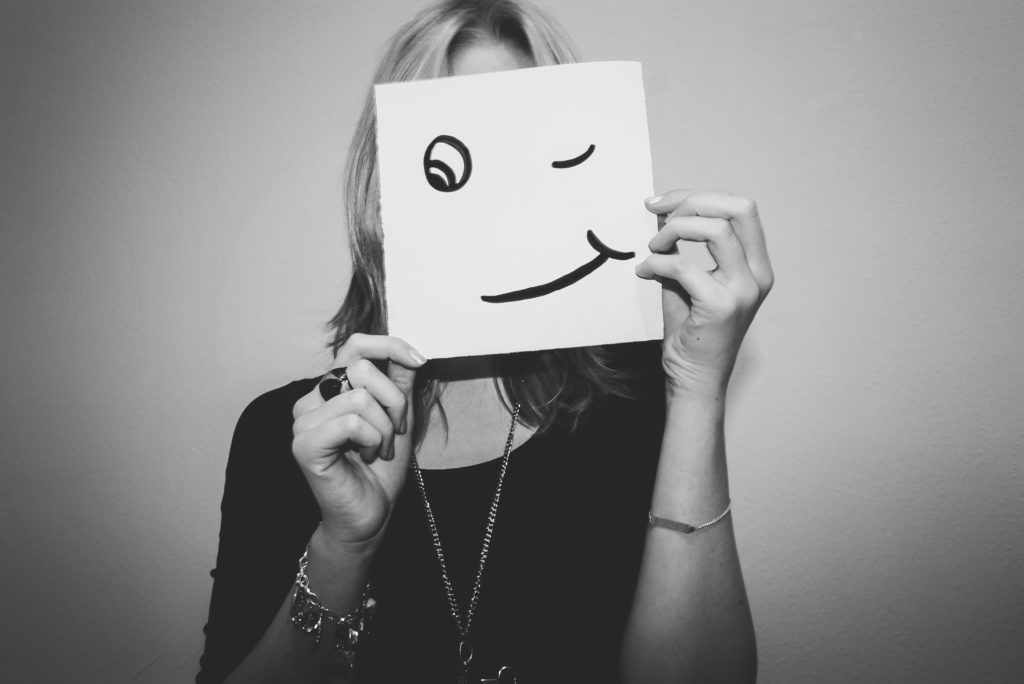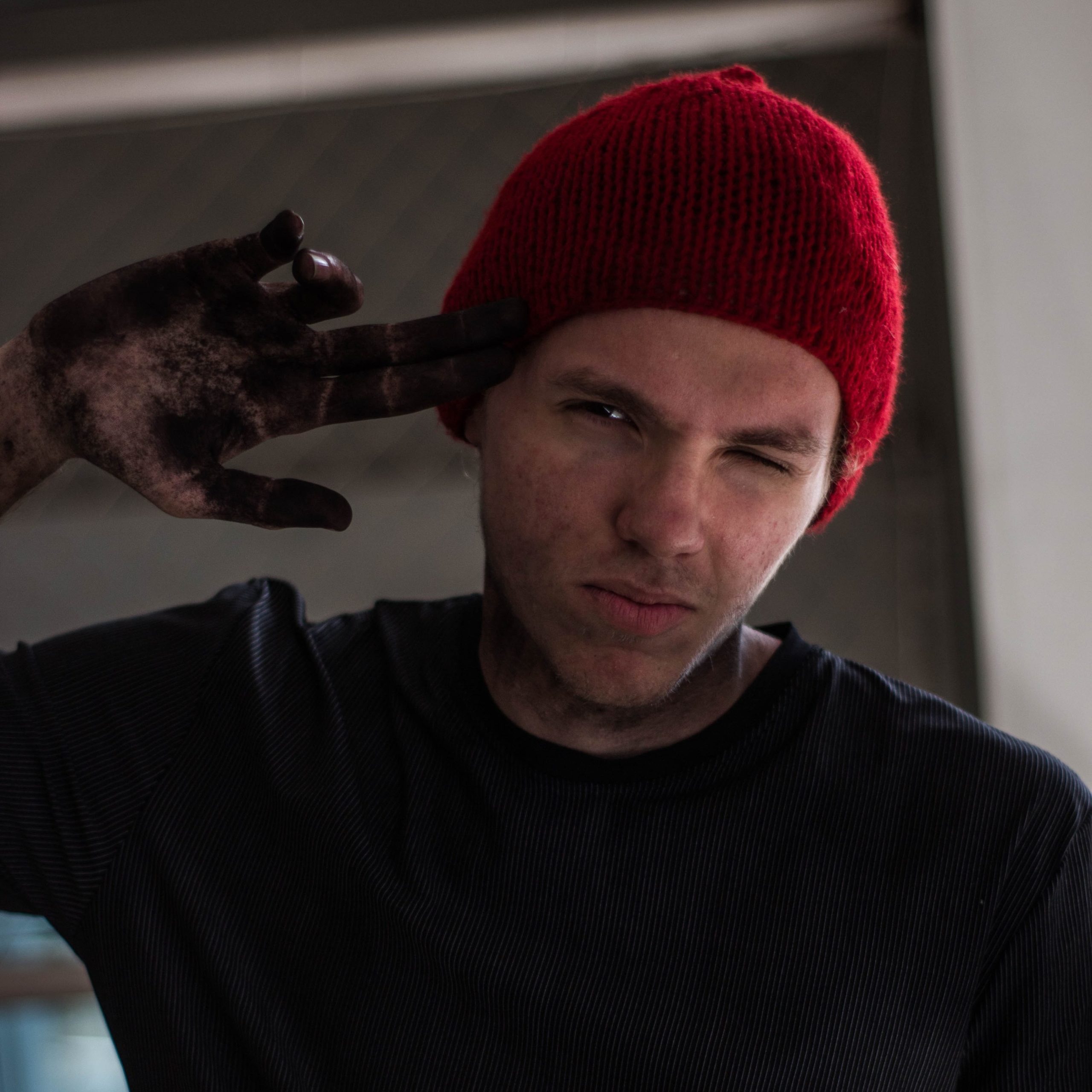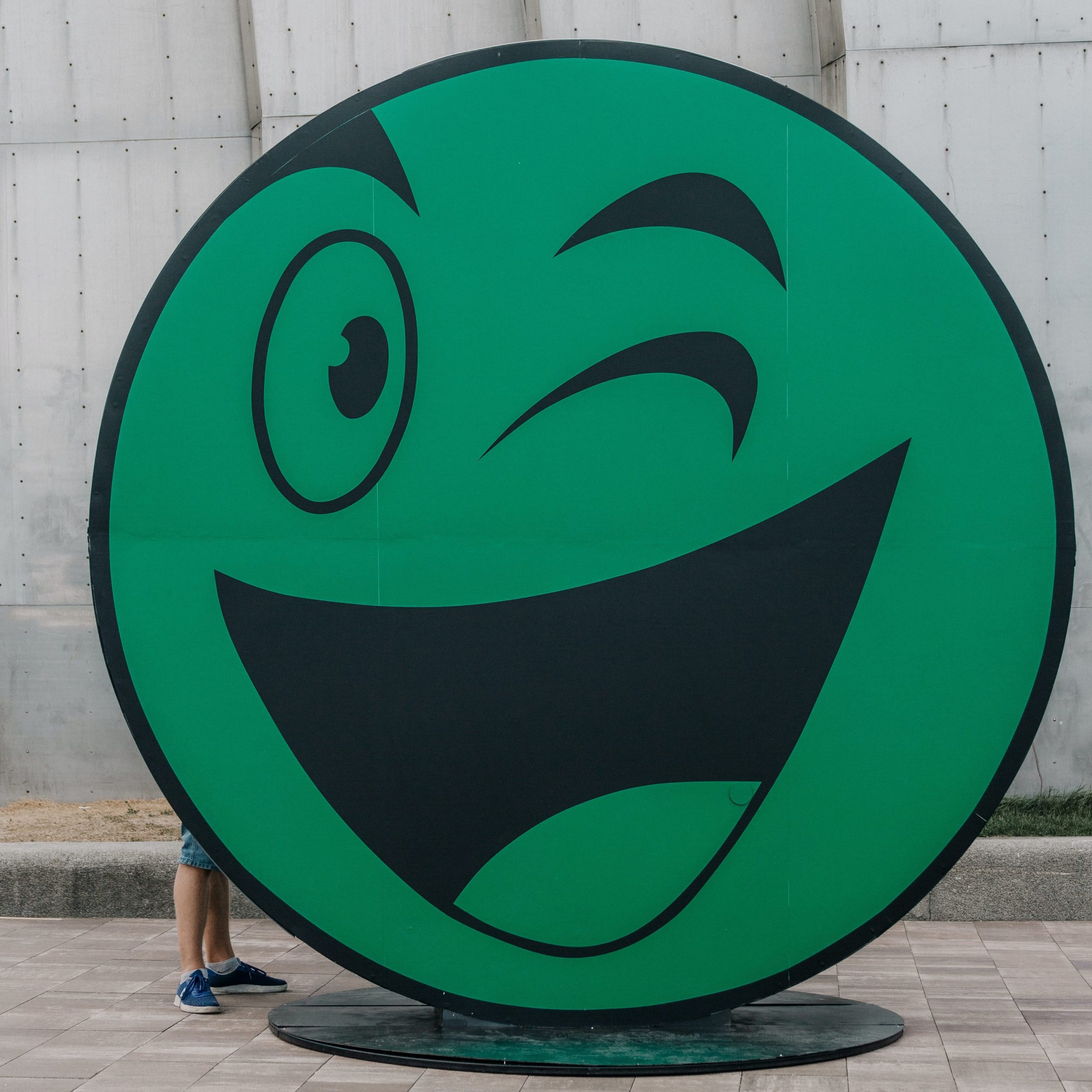Is it a blurry vision? Is it a twitch? Is it a lying cue? Is it a sign someone wants to get your attention? Is someone just joking? Is it a gesture to woo? Or is it a signal to do greater or worse? The winky face can be all of this and more.
As you can tell, this single facial expression has quite a lot going on for itself. In fact, it’s one of those gestures that have a different interpretation in different cultures – which means, it’s not always a positive expression. While a wink in some countries creates a casual and funny environment, in some places, the same gesture is downright offensive and insulting.
While the real expression of momentarily closing one of the eyes is up for a huge debate, it’s not that bad online. Here, the symbolism trickles down to the crème de la crème. In times of doubt, an ambiguous flirty gesture is no longer ambiguous online, at least for most of the time and for most of the intentions. The top of the list hits first and hardest for sensitive emojis, like the 😉 winky face. Not sure what we mean? Read on to know – not just what we mean but also everything about the winking face and the influenced emoji that we sparingly use – to mean the right things.

Meaning of 😉
The 😉 Winking Face emoji or the “winky face” is a controversial gesture. Contradicting the breath of relief hinted in the introduction, 😉 can create equal uneasiness online. But it all comes down to the tone of the message and the emoji. At times, 😉 could instantly create discomfort if meant and received in the wrong way. However, when communicated rightly, it’s all good.
The winking face emoji suggests playfulness, flirtiness, and a general “vibe” of being carefree. 😉 is also applied as the weird and annoying manner of saying “you know what I mean” or “Don’t act innocent”. It also touches a little upon the “lying face”. But not entirely, because “lying”, in the virtual context is honest – no lie ever goes undetected here! Unless the person has already phased out and over that conversation.
Through and through, there is, in fact, a breath of relief to this emoji – the explosive sexual connotations attached to a wink are not that explosive online. Sure, 😉 can be used to flirt and creep out, but, it can hardly harm or offend. So, in related cultural exceptions, 😉 is relatively safer to use online than it is in real life. But we wouldn’t recommend it.
The Science of Winking

Winking is the physical ability to close only one of the eyes. We say “ability” because there are wink-disabled people who can’t wink. Physiologically, winking is a strong connection between the facial motor nucleus and the orbicularis oculi muscle – the muscle responsible for getting you some shut-eye. Now, if their relationship is crappy, then, we’re sorry to say this, but the person will be wink-disabled.
Winking, as we know it, is a non-verbal cue that’s sometimes, an extremely attractive cue as well. It means a diverse range of things across different cultures and countries. But, the wink is not always a suggestive signal nor a gesture full of interpretations. Sometimes, it’s the most basic yet highly useful skill in objective scenarios like aiming and shooting. The reason why most of us need to shut an eye for better aim is that we’re victims of “ocular dominance” – where one eye leads and the other follows.
Here’s a shocker, both eyes are not equally dominant – meaning you don’t use both eyes. There is a dominant eye, much like there’s a dominant hand. This dominant eye leads the process and the less-dominant eye just supports it. This is why we see differently when we close either of our eyes. The picture seen by the dominant eye is slightly off when viewed by the lesser dominant eye – and as a result, the full picture as seen by both the eyes banks towards the visual consumed by the dominant eye.
This ocular dominance is also known as “eyedness” or “eye dominance”, in other words, the 😉 winking face emoji. Just kidding. If we were to take the tangent of ocular dominance, aiming, and shooting, etc., this emoji happens to be the best fit. So, as we said at the start, the 😉 emoji is not just a heavy gesture bombarded with cultural interpretations, but it is, at the fundamental level, a physical capability that comes in handy especially if you’re in the military or if you’re just aiming for the bigger things in life – cause the smaller ones are hard to see.
Significance of the Wink

Setting aside the biological aspect, winking is a vastly recognized gesture that has some of the strongest and sometimes even strangest denotations in most parts of the globe. Different cultures across the world wink with distinct intentions and therefore fall into different social interpretations. Here are some of the recorded cultural interpretations of 😉
Just Kidding
One of the more socially accepted usage of 😉 is to “just kid”. Here, momentarily blinking one of the eyes suggests goofiness. It’s the expression for one’s way of uttering offense and then shrugging it off as “no offense” or “just kidding”. It’s also used as a signal to openly trick an oblivious someone amidst a group that’s familiar with the trick (or vice versa) – the perfect demonstration of just kidding.
Now, we aren’t sure if the joke is the trick or the person.
Inside Jokes
If you were to laugh about something hideous with someone while hiding it in the plain, public sight, it’s best if you have a signal for it. Generating unique words always fails, thanks to bad memory, and screaming out those generated words would only draw the attention you want to avoid.
In such cases, the 😉 wink comes in handy! This gesture and the connotations of a private joke are so internal and universal, that onlookers would know of the innuendo that’s being thrown around right under their nose, but they just wouldn’t know what it is or what it’s about. Heck, they cannot sniff out the rat! 😉 is efficient while laughing on the inside.
Getting Flirty
In many countries, a wink is a suggestive gesture. Most times, it’s taken with a pinch of salt and in some situations, it can be disastrous. 😉 in the West is often a sexual indication that’s either a cue to flirt-and-leave or to flirt-and-continue. However, not all countries are destigmatized. 😉 in Eastern regions like India is taken for a sexual invite. It is cherished and enjoyed consensually, but if it’s in a public place, a random 😉 can get you in trouble – more so, if it’s directed towards women.
No Flirting, Just Leaving
We talked of the “flirt-and-leave” component attached to a Western wink😉. Now, we talk serious manners. In parts of Western Africa, a wink is a non-verbal sign primarily gestured by the parents/elders/guardians/caretakers towards children or anyone younger, for the latter to leave the room. It’s their way of saying “Let the adults talk, you stay out of it”. In fact, it is a cultural norm for children to let adults have their conversations without them. It’s impolite otherwise.
Playful
This interpretation is not tied to any country or culture per se. But it is expressed by many cultural and ethnic identities to show playfulness. When someone’s goofing around or messing with someone else, a 😉 wink conveys that playfulness and harmlessness to watchers. Involved parties would understand that nothing serious is meant by their words and gesture – because they have “inside jokes” that are evidently not very pleasing. So someone observing them may find it alarming in any measure – and that’s when a 😉 can save the confusion and non-verbally diffuse the situation.
“Wink Wink”
We may or may not have encountered the deadly *wink wink* and its fatal significance online 😉 (we mean JK), but the phrase is a suggestive remark. “Wink wink” is not a manner of saying wakey wakey or wake up to the facts or I know what you did, although it is inferred that way sometimes.
To *wink wink* is to subtly refer to the sexual connotation in a context. It is the textual non-verbal cue of indicating something explicit in a rather elegant fashion. This textual feature of the 😉 winky face only furthers its flirtatious personality more than anything else – which builds upon the fact that winks are in general sexual, flirty, or even vulgar gestures.
What it Means When Someone Sends 😉

There’s a broad array of interpretations that stem from the usage of the 😉 winking face emoji. Unlike most emojis on the list, this one adds to the most colorful. A sender can mean anything ranging from “friendly” deception and polite dishonesty to flirty intentions and creepy but sexual cues. But as always, the potential red flag for the winky face can only be deciphered via the context and the mutual closeness with the sender.
So, here are our interpretations of what 😉 could mean based on the sender and the star of the show – the context.
When a Stranger Sends 😉
We’re sorry to say this, but irrespective of the context, a winky face from a stranger is disturbing. Even if the sender is crafting a smooth pick-up line, a flirty invite, or a subtle/loud sexual remark, 😉 is bound to make the receiving end of the conversation a super-duper uncomfortable encounter. The reasons why a stranger would choose to inaugurate a chat with another stranger (you) using a wink face is deeply questionable because 😉 as an emoji is not only highly expressive, but it is also intimate. It takes some amount of closeness and knowledge of the person and the relationship to use 😉.
If a non-sexual context is in the room with the winking face emoji, then, there’s still an elephant with it. A stranger accompanying any message with this emoji would be their horrendous way of making talk or attempting at immediate acquaintanceship – that is, skipping the get-to-know-each-other part and cutting straight to the chase. If we were to strip the 😉 emoji of its vulgarity, it’s still a private expression – because winks are made to laugh, acknowledge, or invigorate private jokes. It’s also the gesture that highlights and makes known a secret connection – one that is usually shared between two people.
So, with this much privacy running in the background for the winky face, a stranger sending it is a red flag, regardless of the context. A bright red one, even. Unless this is the kind of conversation you encourage.
When an Acquaintance Sends 😉
If an acquaintance you’re not close to sends 😉, it’s a sign they want to close in the professional or familial gap. They aim to share insight into their world and hope you join it in good measure. If they’re using the winking face emoji to remind you of something you both experienced, then this memory meant something special to them, even if it is in the smallest ways. It could’ve even been your time together, a joke you/they/someone else cracked – and their attempt to turn that into an inside joke – thereby sharing something of your own.
However, in the rarest yet possible cases, if 😉 appears alongside a touchy message that did or did not make you uncomfortable, that would point to a one-sided close relationship. The sender here, clearly, wants to get closer and maybe has even etched a more personal image of you in their minds; which may not be the case on your side of the conversation.
😉 may have a flirty essence if the acquaintance is trying to hit on you, get close to you in that way, or just “get to know you”. How do you draw this sensitive conclusion? By their behavior when they’re physically around you, by the structure and tone of the text message, and by previous messages, ofc – when all that is combined with 😉, things get apparent.
When a Friend Sends 😉
The question here comes down to the kind of friend you’re talking about – a friend or a “friend”. If it’s the latter, you may have seen this coming. The so-called friend is actively trying or rather pursuing the conversation, and with that, you. The sender in this case can be favorable or not and this emoji can only advance that favorability in any direction.
😉 could signify their playful or “naughty” demeanor that they’re exclusively posing for you or it’s just their effortless and usual style. A friend using this emoji should not be as problematic as the previous sets of senders – but that said, it shouldn’t be ignorable either, especially when you don’t know the person very well.
Now, the friend – the former of the two choices. If you’re not acquainted with the usage of air quotes, “friend” is someone who is labeled as a friend to the outside world or for your delusions but is, in reality, a bit or a lot more than just a friend. Could be a romantic interest as well.
We’re talking of the former here – just a friend. It’s the person(s) you know and help out without the intimacy of closer friendships. When this kind of a friend sends 😉, it signals better amiability. The person might be seeking to create a better vibe between y’all and thereby hope to be part of a closer friendship, slowly but steadily. In short, the person likes you – asexually, platonically, and purely friendlily.
When and How to Use 😉

For starters, we recommend using the 😉 winking face emoji only with people you know and are close to, in any way or form. As elaborated above, the 😉 emoji and strangers or acquaintances just don’t mix. Though the intent behind this emoji in either conversation may vary and also tend to be clean, this emoji is not one that’s spontaneously understood in the best and cleanest ways possible. The wink is provocative that way.
Joking
If you’re implying a joke, one that’s blatant, or one that needs some far or near thought to recollect and laugh at, then you can use 😉. While using this emoji, it’s best when the joke is not obvious. The wink is the signal to hunt for the reason to chuckle – and this way, making it that much funnier. You may also use this emoji if you’re winking at a previously laughed-at joke – where you will be resurfacing old hilarity; something you and the sender are familiar with. However, getting some laughs from the other end is not always guaranteed because people grow out of jokes pretty quickly.
Lies
We apologize if the word makes you feel twitchy and uneasy – if you’re the kind that never lies. But, we’re not referring to the “white” or “black” lies that’ll get you in trouble. We’re referring to the open-air deception. The open lies. When you lie about something, the other person knows and acknowledges the lie and you eventually laugh it off. For instance, “Oh. I never said that 😉” or “As a matter of fact, I did beat up the ENTIRE crowd 😉”. This use-case could level up the previous because here too, the “lie” is indeed an inside joke. It’s a fact, covered with sincere evasion.
Explicitness
Going down to the natural use-case of the 😉 winky face. Almost every culture and country that winks will have a broader and stronger bandwidth in this use-case, than any other (listed and otherwise). A wink, for most of its time as a gesture, has been suggestive. It’s one of the expressions capable of disastrous consequences when carried out in the wrong scenarios. But, is appreciated in the right ones.
So, if you’re being flirty, sprouting clues at physical/sexual attraction, talking about sex, or anything to do with the entire journey of getting to know and getting in bed, 😉 would prove to be both goofy and welcomingly and maybe even thirstily indecent – when you use it with the right person, under the right circumstance, and with the right tone.
When NOT to Use 😉

Anything besides the above is a big NO-NO. Just kidding. The inappropriate instances for 😉 are not that straightforward, though they’re very much common sense. Baring in mind the age, relationship, and knowledge of the person and their mental wavelengths, here are the top conversations where 😉 would be a horrid idea.
While Talking to a Stranger
Hilarious.
We completely advise you against using the 😉 winky face emoji with strangers. The person may or may not have the same mental wavelength and understanding as you, but as a stranger, it’s best to give yourself the benefit of the doubt. It’s always advisable to wait until you know of their dispositions and then feel free to use any emoji, including the 😉.
While Talking to Someone You DON’T Want to Attract That Way
This may be a given. But sometimes, we tend to just go with the wind – with the breeze of our own interpretations, unbeknownst of its different perceptions. A playful or “lying wink” may be taken for a flirty hint or the other way around. Anything can happen because anything is possible!
So, going by the frightening ambiguity of this emoji, it’s recommended to steer clear of 😉 with people you don’t want to attract. However, if you still want to apply this emoji, then make sure you are clear with the intentions of the emoji as well. It might be awkward but, communication is always key.
In Formal Conversations
It doesn’t matter how chatty or gossipy a formal group gets, a single wink and your impression can risk reputational indentation. Winks are never accepted gestures in mundane and regular spaces like the workplace, the neighborhood, a religious place you go to, the cinema, etc. They’re always underlyingly loud with their expressiveness and non-verbality, that even an accidental wink can be a cause for trouble.
Anything besides known, familiar, and close relationships are formal. We conduct ourselves formally in these scenarios because it’s both individually and socially pleasing. And in such scenarios, a 😉 could make things super awkward and potentially exclude you as the “weird one”. So, no. No matter how pure the intentions, please do not use this emoji in formal conversations.
While Talking to Someone Older
We have our amazing bonds with older people, and there’s a reason it stays amazing. Apart from wise stories and life lessons, relationships with elders remain insightful and healthy because, both the elder and the younger stay within limits. Pushing the boundaries of comfort with older people, especially, is never a wise decision. It could backfire in the most passive ways, and you wouldn’t want it.
Exceptions apply when you know the older person and most importantly the older person knows you, the use-case of your emojis, and the intentions they bring to the virtual table. If these exceptions don’t apply, then we don’t support using 😉 with elders. More than just rattling them with discomfort, the uneasiness lies in the possibility that they may understand the wink in their own ways or the ways they’re learned about, precisely when it isn’t backed with enough explanation from your end.
While Talking to the Younger
Younger adults applying their language, slang, and symbols in conversations with older people is generally looked at as a positive and uplifting sign. It’s an inclusive and progressive affair. The elder may feel like part of the “new age” and the younger generation. Nevertheless, this doesn’t always apply. Exceptions prevail, as always.
People, usually like to move forward than to be told of older ways, and hence, an elder using 😉 with their interpretations could cause discomfort. Now, we’re not talking only of old people when we say “elder” or “older people” – it’s anyone as long as you have someone younger to you. And if the younger person is a teenager, we strongly unrecommend using 😉.
Essentially, the suitable people to use 😉 with are of your own age, are in the close/closer/closest circles, know you (and you, them) very well, want to know you better, and anyone except strangers and acquaintances – because even with the other restrictions, there are broad exceptions.
Related Emojis

The 😉 winking face emoji has a vibrant span of significances differing between cultures and individual uses. But there are a couple of themes that stand out – these are the more widely incorporated implications than the rest. Those themes include goofiness, playfulness, suggestiveness, creepiness, and friendly deception aka casual and open lying. On the emoji list, there are other emojis that render these themes independently.
So, presenting the emojis that relate to 😉 in some way or the other.
😜 Winking Face With Tongue Emoji
The 😜 winking face with tongue emoji has a wink in it, much like the winky face, and thus, signifies some characteristics aligning with the latter. It is a merge of goofiness and the possibility of casual deception. You could be just kidding with this emoji and talk about something crazy but factual and unapologetic for it as well.
In fact, 😜 is the “crazy” face that takes one for a team of madness, naughtiness, and mischief. The absurdity of this emoji is also seen in the 😛 Face With Tongue emoji, but to a much lesser extent.
👀 Eyes Emoji
This emoji is one of the creepiest emojis on the list. We’re not talking ‘creepy’ as in hair-raising and frightening, but ‘creepy’ as in the unwanted, unwelcoming, stalker way.
The 👀 emoji has a compelling creepy presence as opposed to the 👁️ Eye emoji. Though both represent the same sense organ, there’s an eerieness to the former emoji – and that is its “wideness”. Soft eyes don’t radiate creepiness. But hard, stony, and ‘fixed’ eyes do, like 👀.
🌚 New Moon Emoji
If the previous emoji is one of the creepiest emojis, this one’s THE creepiest. Why? What’s wrong with a new moon’s face turned into a smiling emoji? The reason is precisely that.
During a new moon, we don’t see the moon, but it’s there, always, just hidden in plain sight. Now that’s just the baseline of this emoji’s creep radar. 🌚 is also known as the “molester moon”, and has an unsettling smiling face on it. You do the math. The emoji list knows of this creepiness, and therefore there’s also a new moon without the smile, and consequently, without the creep quotient – the 🌑 new moon emoji.
🤡 Clown Emoji
Clowns have been associated with anguish- for a long time now. Pennywise only worsened the situation. Besides, there is also a specific fear of these guys – the clown phobia also known as coulrophobia. While many find clowns and 🤡 to be funny and entertaining, some of us find them downright terrifying, nightmarish, and a phobic element. If that wasn’t enough evidence as to why clowns and the emoji are creepy, we don’t know what is.
🤥 Lying Face Emoji
Pinnochio’s nose is the epitome of honest dishonesty. It’s all about truthful lying. In real life, the long nose would have been quite embarrassing and dreadful, in hindsight, but online, it’s all cool. With this emoji, everybody knows one’s little secret. Lies are indeed pretty here. The 🤥 lying face is comically serious about the situation, unlike the 😉 winking face that openly mocks and smiles it out. Nevertheless, both emojis exhibit deceit in a non-threatening fashion – the winky face a little more than the lying face.
In Conclusion
The 😉 winking face emoji is a contentious emoji given the gesture it draws inspiration from. Though the use-case of this emoji is liberal and uncaged, there are a couple of valid but conservative notions attached to it. Flirty, suggestive, and sexual connotations play out the most for this emoji, though it does have multiple streams of non-sexual interpretations such as deceit, solitude, inside jokes, and socially internalized gestures.
Based on the sensitivity of this emoji, the winky face is best avoided in situations that don’t get you in trouble. Although it’s just an emoji, it is yet a symbol of our expression – on the biggest human-based network. So, the implications do matter, and hence, the emoji too. Using 😉 requires good knowledge of the person, a close relationship, mutual openness, and awareness of the intent behind the emoji and the intention(s).